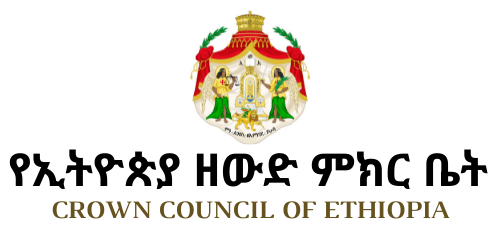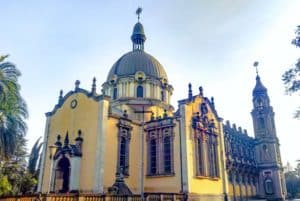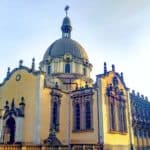By ELIZABETH PEZZULLO
National Slavery Museum holds groundbreaking; additional details of venture divulged
It was billed as a groundbreaking, though no ground was to be found. But that didn’t stop former Virginia Gov. L. Douglas Wilder from boasting that plans for the National Slavery Museum in Fredericksburg are moving at a steady clip.
Instead of asking people to schlep out to the proposed museum site overlooking the Rappahannock River, Wilder held the symbolic groundbreaking downtown, in the elegant Fleming-Smith Room at Kenmore Plantation & Gardens. “I don’t think you’d like to be walking around the site this morning,” Wilder said, referring to the cold, windy weather. “It wouldn’t be the same as this nice, warm place.”
Wilder told a gathering of museum enthusiasts, local government officials and journalists that construction will begin in October of next year and the museum will open in 2007. Museum officials are working with architect Chien Chung Pei, son of I.M. Pei, designer of the National Gallery of Art’s East Building on the National Mall in Washington and other famed structures. Chien Chung Pei attended yesterday’s symbolic groundbreaking.
Pei, a member of Pei Partnership Architects of New York City, said he’s working with museum officials on a design that will reverently capture the museum’s essence. “This project has to have its own life,” Pei said. “It goes way beyond the walls of the building. The project is about dignity.”
Behind Pei was an early rendering he did of the proposed museum. The slick steel-and-glass design resembles other Pei-family projects. But Pei said he is still planning the “program” for the museum, covering exhibit space and design. “The best buildings emerge from active involvement from the client,” Pei said. “And in this case, from the public.”
In 2002, Wilder chose Fredericksburg as the site for the museum, which could cost between $100 million and $200 million. The Silver Cos., Fredericksburg-based developers of the Celebrate Virginia tourism complex, donated 38 acres at the site for the proposed museum.
In March of that year, museum officials signed a loan agreement with the city for $1 million. The city’s money, which is to be used to benefit the entire Celebrate Virginia project and not spent on the creation of the museum, will be paid back through a special tax on landowners in the development.
According to the terms of the March 2002 agreement, slavery museum officials are to submit an annual report to the city describing all services it has provided using the money, and a breakdown of expenditures. On Oct. 14, the city received a timeline for the project, a list of the museum’s board of directors and a copy of the museum’s 2002 federal tax return.
Missing were both the narrative of services provided and an accounting of how the city’s money has been spent. Last week, City Manager Phillip Rodenberg received a letter from the museum’s accountants, Keiter, Stephens, Hurst, Gary & Shreaves.
The letter said that “grants given by the city of Fredericksburg are received by the organization and deposited into a separate checking account handled by First Union Bank. All grants are deposited immediately into this account upon receipt. All expenses incurred with regards to this grant are withdrawn directly from this account.”
Rodenberg said he has asked Foster for more details on how and where the money is being spent. “I need to be sure that funds are being spent according to the agreement,” Rodenberg said yesterday. In addition to the city’s money, another $1 million appropriation was made by the Virginia Department of Historic Resources.
That grant–which could be used for either capital or operating costs–was disbursed to the slavery museum between December 2002 and June 2003. Wilder said he also plans to tour the country to raise funds for the project. Yesterday’s ceremony centered largely on Wilder’s determination to make the museum a reality. “This museum is going to be built,” said Wilder, the grandson of slaves. “There’s no question about it.”
Wilder added that plans to open a national, federally funded African-American Museum in Washington won’t thwart his efforts. “There is no competition between them and us,” Wilder said. “In fact, I applaud that effort and look forward to working with them.”
Wilder also announced a new board member. A grandson of former Ethiopian Emperor Haile Selassie, HIH Prince Ermias Selassie, has been added to the museum’s board of directors. “He’ll help to coordinate in Africa for us,” Wilder said.
The rest of the board consists of Wilder; actor and comedian Bill Cosby; Jacob Gelt Dekker, founder of the Kura Hulanda museum in the Caribbean’s Netherlands Antilles; John Hope Franklin, a historian and professor at Duke University in North Carolina; William Harvey, president of Hampton University; and Patrick H. Swygert, president of Howard University in Washington.
Wilder also lauded his new executive director, Vonita Foster, for kicking the project into gear since taking over in August. “We’ve moved light years since she took over,” Wilder said. Foster has created a timeline for the project, fleshed out the mission more succinctly and beefed up the site’s Web page.
Last month, Foster, Wilder and Pei toured the Kura Hulanda museum, which will be a quasi-model for the one here. In February, the museum plans to bring a traveling exhibit on American slavery to area schools. “I feel like we’re really making progress,” said Foster, who works with an assistant out of offices in the Central Park business complex off State Route 3. “We’re on target and rarin’ to go.”








